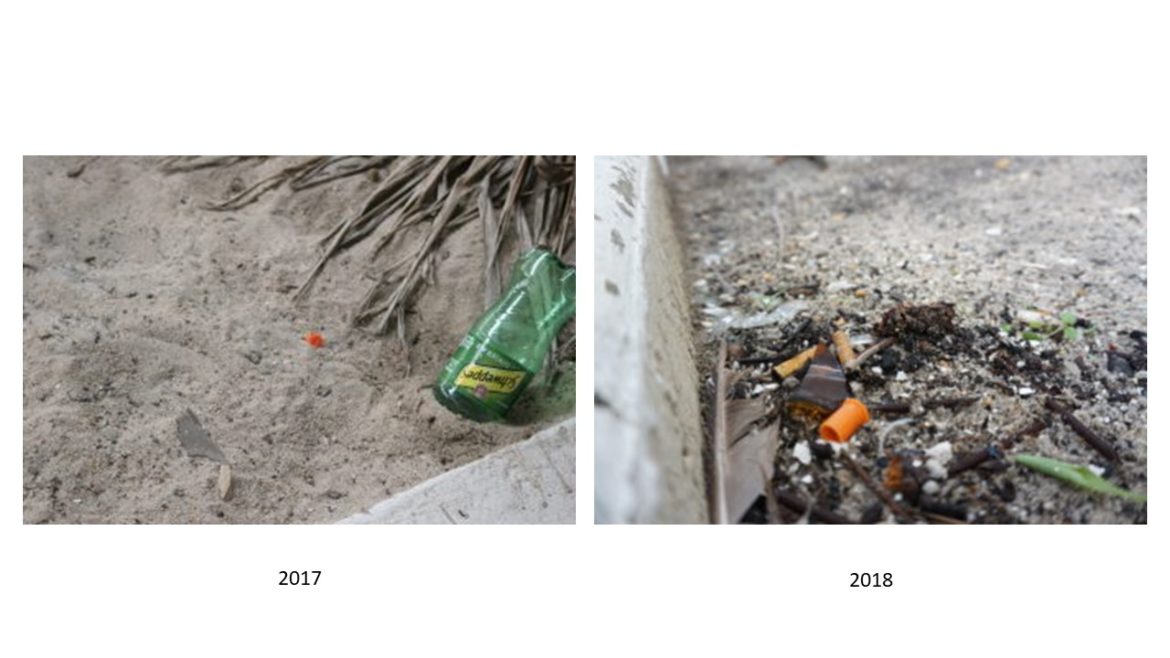In August 2017, we published a long story on the efforts by the Trump Organization to erase Donald Trump’s name from the Atlantic City casinos he once owned, an effort that began in 2014, when Donald was in negotiations with NBC over his reality TV show “Celebrity Apprentice.” At the time, Trump was concerned about the “appalling” (Donald’s word) conditions at the Trump Plaza and the impact those might have on his brand as a business guru, or something, so he sued to have his name removed from the property.
In 2016, the Trump Taj Mahal was closed and later sold to Hard Rock, marking the first time since 1984 there was not a Trump-branded casino in Atlantic City.
A curious coda to our story was the discovery that the human resources offices at the Taj—or rather the steps and foyer out front—had been turned into a makeshift shelter by some of Atlantic City’s mostly-homeless population. There were cardboard boxes, some discarded clothing, a can of talcum powder and the hypodermic syringes that are/were a common sight across the City of Atlantic City Tourism District.
The opioid epidemic had been subtext—maybe even text—for the 2016 election, in which the president famously overperformed in counties with high rates of “deaths of despair,” ie elevated mortality from alcohol, drugs and suicide. But if Donald cared about these deaths of despair, you wouldn’t know it. Pains had been taken to erase the “Trumps” off the pictures of the Taj Mahal that had been plastered on the sides of the actual Taj Mahal. It seemed too perfect a metaphor.
After the Taj was sold to Hard Rock, Jim Allen, the chairman, announced $500 million in renovations, and the building, including the HR offices, were wrapped in scaffolding and plywood. Seemingly the end of that metaphor. Except, the other day I went by the old Taj and was a little surprised to see that though the curtain had been removed, conditions were the same as last year. The old pictures of the Taj were still there, still crudely effaced. And there were signs people were sleeping out on the concrete ramp. There was even an orange hypodermic cap in the planter.
“Maybe everything that dies some day comes back.” Right?




